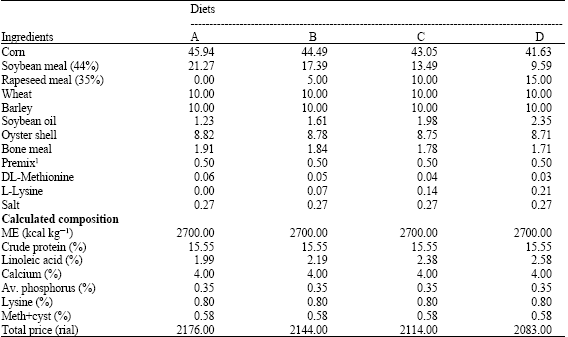Research Article
The Effects of Replacing Soybean Meal with Different Levels of Rapeseed Meal on Egg Quality Characteristics of Commercial Laying Hens
Department of Animal Science, Islamic Azad University, Shabestar Branch, Shabestar, Iran
Y. Ebrahimnezhad
Department of Animal Science, Islamic Azad University, Shabestar Branch, Shabestar, Iran
K. Nazeradl
Department of Animal Science, Islamic Azad University, Shabestar Branch, Shabestar, Iran
N. Maheri-Sis
Department of Animal Science, Islamic Azad University, Shabestar Branch, Shabestar, Iran
R. Salamatdust
Department of Animal Science, Islamic Azad University, Shabestar Branch, Shabestar, Iran
T. Vahdatpour
Young Researchers Club, Islamic Azad University, Shabestar Branch, Shabestar, Iran











